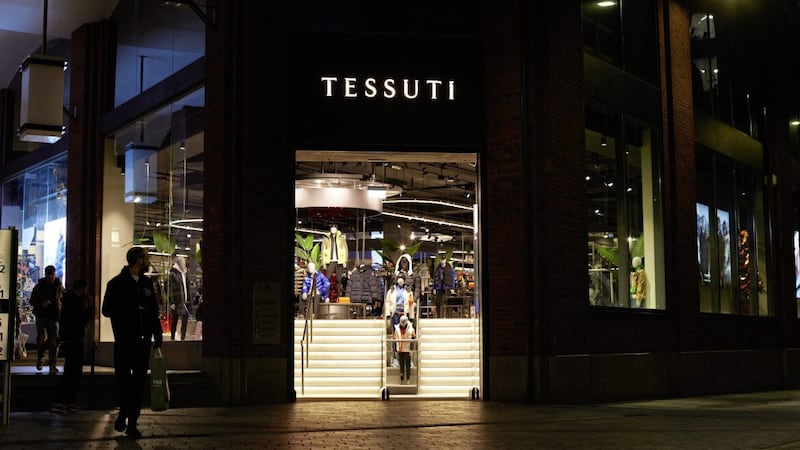COVID lockdowns meant 2020 was a year to forget for the film-making industry and the movie watching public. No Time To Die, the latest film in the James Bond franchise was delayed three times because of the pandemic.
2021, though, has seen a steady stream of much anticipated sequels being released such as Top Gun: Maverick, Mission Impossible 7 and October’s Halloween Kills.
Some sequels use the same cast and rehashed plot lines as the original. Others introduce new characters and new story lines to engage the audience to keep the story fresh.
In the economics world, there are plenty of sequels too, whether it is stock market crashes, recessions, or financial crises. Invariably with economic sequels there are similarities with the original but there can also be notable differences.
The latest economic box office release doing the rounds is the Cost-of-Living Crisis 2. This is the sequel to the squeeze on living standards that took place between 2008 and 2014, particularly the period from late-2009 to late-2013. This was a sustained period when consumer price inflation significantly outpaced pay growth. It was also a period of austerity with a scaling back of welfare benefits, multi-year benefit freezes and public sector pay caps.
Back in 2013, Ed Miliband focussed on the worst cost of living crisis to hit Britain since the 1920s. Unfortunately for the then Labour leader, the cost of living started to improve in 2014 and 2015 and thus hurt his campaign to become prime minister.
Back to the present day, and once again the cost of living is becoming the top political issue.
Around the world, households are being hit with inflation rates not seen in several years or indeed several decades. Food and energy prices are soaring, housing is becoming less affordable, and incomes are being squeezed.
UK CPI reached 5.1 per cent y/y for November – the highest rate in over a decade. The UK’s sources of inflation are broad-based, but energy accounts for a disproportionate share, representing just 6 per cent of the CPI basket of consumer goods and services yet almost one-third of the current inflation rate.
Increases in prices of petrol and second-hand cars were the key drivers of the latest surge in inflation in November. However, price rises were broad-based across goods and services. Consumer price inflation was as low as 0.4 per cent y/y in February of this year and is now expected to peak closer to 6 per cent in Spring 2022. This would represent a 30-year high; indeed consumer goods price inflation (+6.5 per cent year on year) is already at its highest rate since August 1991.
Food price inflation is on the rise. Indeed, everyone is watching the price of a turkey dinner as we approach Christmas, but consumer prices in Turkey are even more interesting. There, inflation is running at 21 per cent and the value of the Turkish lira is plummeting. If foreign travel is allowed, Turkey could be top of the ‘value for money list’ for sunseekers in summer 2022.
Up until now central banks have been loathed to take up the role of inflation busters just yet. But the Bank of England took up the mantel last week with its first rate rise in three years. And we can expect a sequel soon and perhaps more to follow after that. Indeed, Bank Rate could hit 0.75 per cent by the end of 2022.
Inflation hits those on lower incomes disproportionately hard and as illustrated in the last cost-of-living crisis, Northern Ireland fares worse than other UK regions. Northern Ireland has the highest proportion of low paid jobs in the UK (almost 1 in 5), it has the lowest discretionary disposable income within the UK, and local households spend disproportionately higher amounts of their income on energy, food, petrol and diesel relative to the rest of the UK.
During the noughties, pay rises consistently outpaced inflation, effectively providing NI and UK workers with a foot up the standard of living ladder. The global financial crisis ultimately led to a huge cost-of-living snake with the median annual wage of a private sector full-time worker in Northern Ireland falling by 12 per cent in real terms between 2008 and 2013. That equated to a fall of £3,000 per full-time worker.
From 2013 until the start of the pandemic, local workers had been clawing back their fall in real earnings and improving their standard of living. Some sections of the workforce, notably those working part-time, benefited from the inflation busting increases in the National Minimum Wage/National Living Wage.
By 2019, private sector wages for full-time employees had almost returned to their 2008 level when adjusting for inflation. But the pandemic has seen real wages fall back again. It is noted that the median wage for a full-time private sector worker is on a par with where it was in 2007 (£25,500).
And once again we are at the start of another big cost-of-living snake. With inflation set to outpace wage growth in the next couple of years.
Increased taxation will squeeze incomes too. This is a key difference with the last cost-of-living crisis. There is a planned 1.25 percentage point increase in employees and employers national insurance contributions from April 2022. An individual on £20k, £30k and £50k will pay an additional £130, £255 and £505 respectively from next April. A four-year freeze on the income tax personal allowance and higher rate (40 per cent rate) thresholds will also mean higher tax contributions and lower disposable incomes.
On a positive note, the labour market is in much better shape with the unemployment rate less than half of its peak during the last cost-of-living crisis. And there are a record number of job vacancies. As a result, most employers will not be able to pacify staff with a pay freeze, unlike a decade ago.
On a negative note, the last cost-of-living crisis did not have to contend with Brexit.
The NI Protocol has already provided significant benefits to many local companies. But the ‘best of both worlds’ NI Protocol narrative wrongly suggests that the new arrangements are unambiguously positive. The access to both markets is helpful, but Brexit – and its outworking through the Protocol – add new regulations, bureaucracy and costs.
The new regulatory sea-border is not the best of any world, it is a vehicle to deliver Brexit. Brexit’s costs are well known but haven’t fully arrived yet. In time, businesses will pass these on to consumers. Remember consumer spending accounts for around three-quarters of Northern Ireland GDP. Therefore, anything that adds to the cost of consumer goods will impact significantly on NI’s economic growth outlook too.
The cost-of-living crisis 2 will be coming to a household near you soon. But of course it isn’t the only blockbuster to be worried about. Sadly, rather than the latest romcom sequel, we’re now talking about Omicrom, the latest mutant sequel.
Whilst 2022 could be a good year for the film industry, it will likely be another year to forget for a number of other industries, such as hospitality. And the cost of living crisis could be even more acute for those who work in them.
Richard Ramsey is Northern Ireland chief economist at Ulster Bank







